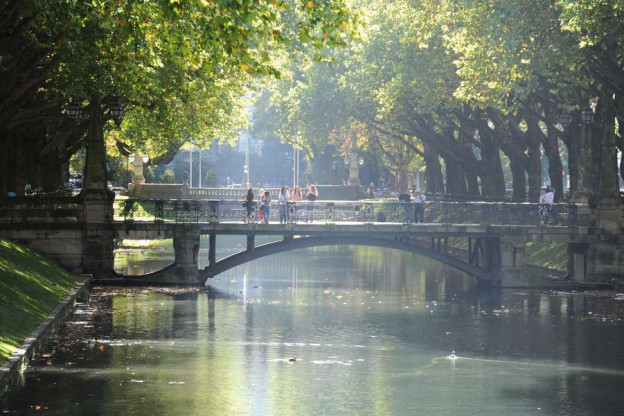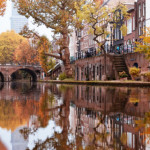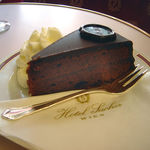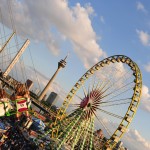Michael Edwards’ insider guide to Dusseldorf investigates a city that flies under the radar as a travel destination
When it comes to quality-of-life league tables, green and leafy Düsseldorf does exceptionally well. Sometimes placing in the Top 10 most liveable cities in the world. Even the nickname of the 10 minutes city is appealing. According to locals, almost everything is within 10 minutes on the supremely efficient S-Bahn and U-Bahn infrastructures. Or even better in a compact city that claims to be 56% green space, so much is walkable.
Another big travel stat is that Düsseldorf is only just over an hour in the air from London, that’s both City and Heathrow airports. Then, with transport included in a Düsseldorf Card, it is a quick transfer into the city.
Yet, Düsseldorf is less well-known among travellers than the likes of Berlin, Frankfurt, Hamburg and Munich. Way west of Berlin, closer to Holland and Belgium than Germany’s capital, geography has given the city some advantages.

When the Iron Curtain cut Germany in half and Berlin was divided into sectors, many artists were drawn to Düsseldorf. Although the city had a bureaucratic nickname, “The writing desk of the Ruhr” – from its reputation for housing the HQ of many an industrial company – Düsseldorf has a strong artistic heritage and a reputation for a lively counter-culture. Don’t forget that Kraftwerk with their futuristic electronic music, minimalist lyrics and robotic aura came from Düsseldorf.
Dotted with galleries, private and public, art is everywhere in Düsseldorf. That isn’t surprising as Joseph Beuys, a professor at the Kunstakamedie during the 1960s, announced, “Everybody is an artist.” Set amidst serene parkland, K20 and K21 are inviting galleries, not mountains nor robots.

This insider guide to Dusseldorf shows Dusseldorf has the ability to surprise visitors. Home to one of Europe’s largest Japanese communities, a walk through Neiderkassel and along the Immermannstrasse can feel like a stroll through Tokyo. Lovers of ramen and sushi flock to the area.
Watery landscapes contribute to Düsseldorf’s peaceful appeal. After the city was sold to Napoleon in the late 18th century, canals were used to increase France’s tax yield. Checkpoints were located on bridges to collect taxes as traders moved around the city. Nor should it be forgotten that the city takes its name from the smaller Düssel river that flowed into the larger Rhine. Long ago the spot may have been the location of a “dorf” or village. Now, it is the heart of a city with over 600,000 inhabitants.

It is the deep, wide Rhine River that is the headline act when it comes to waterways. Every day hundreds of cargo ships sail along the Rhine. They are intermingled with river cruisers heading south through Germany or west into Belgium and Holland.
Aiming to present the city as a thriving 21st-century port on the Rhine, Frank Gehry was commissioned to design three twisting modernist creations of mirrored walls and white finishes. Equally architecturally interesting is the design of the regional parliament. Cog-shaped buildings symbolise the relationship between central and local government

Düsseldorf is renowned for its distinctive dark-copper-coloured local beer. Water has to be drawn from Düsseldorf’s wells for the old-fashioned top-fermented beer to officially classify as altbier. A stein of altbier, served with sauerkraut and spicy sausage in one of the beer halls, is a true taste of Düsseldorf. Though watch out for the sticke alt, meaning secret in the local dialect, as it is a much more potent brew.
But there have been times when Düsseldorf has made enemies. In 1848, horse manure was thrown at Wilhelm lV, a deeply unpopular Prussian ruler when he visited. As a gesture of recompense, Düsseldorf’s classical esplanade was renamed Königsallee, translating as King’s Alley. Clearly, it was a reluctant apology. To have called it Wilhelm lV Allee would have been more fulsome.

Time rolls on and Wilhelm is long forgotten. Today’s shoppers stroll along tree-lined Königsallee past a glamorous selection of upmarket retailers at the heart of an affluent modern city that is quite rightly proud of its art, culture and cuisine.
Tell Me More About this Insider guide to Dusseldorf
For more information on this Insider guide to Dusseldorf Visit Dusseldorf Tourism for details on where to stay, what to do and what to eat.
Buy a Düsseldorf Card
Getting there: Eurowings fly direct London Heathrow to Düsseldorf. British Airways fly direct from both London Heathrow and London City.
http://www.viva-cruises.com/en-gb/ provides itineraries of river cruises sailing from Düsseldorf.






